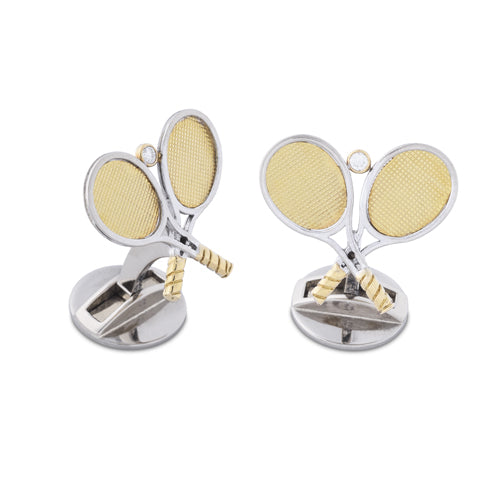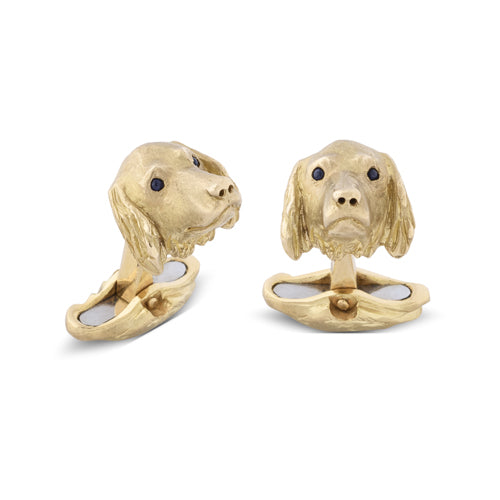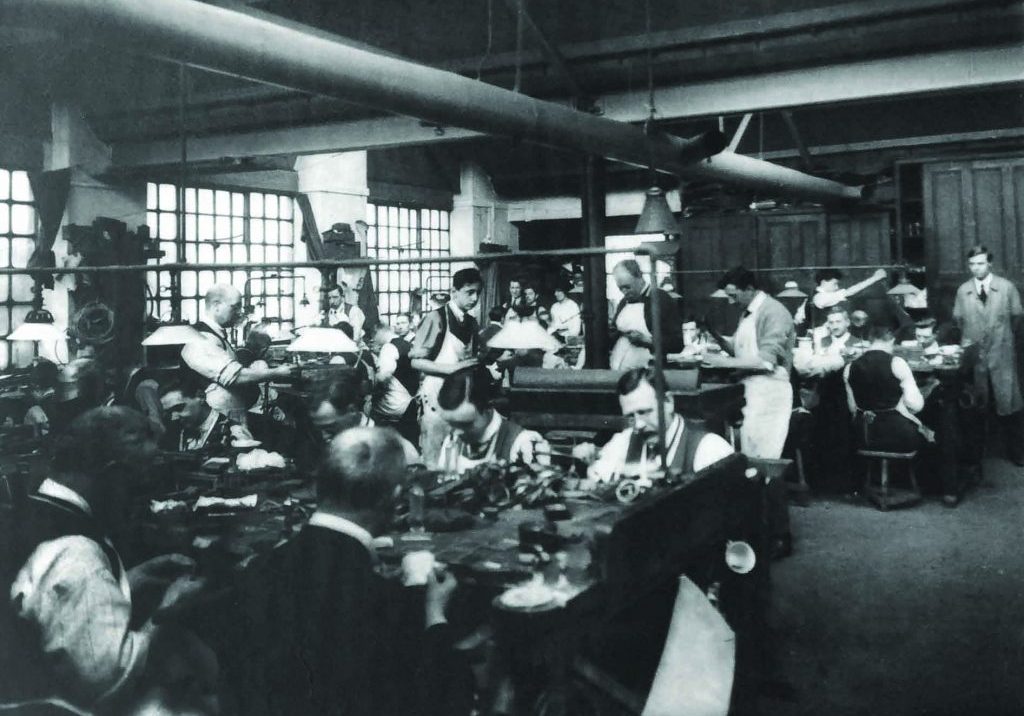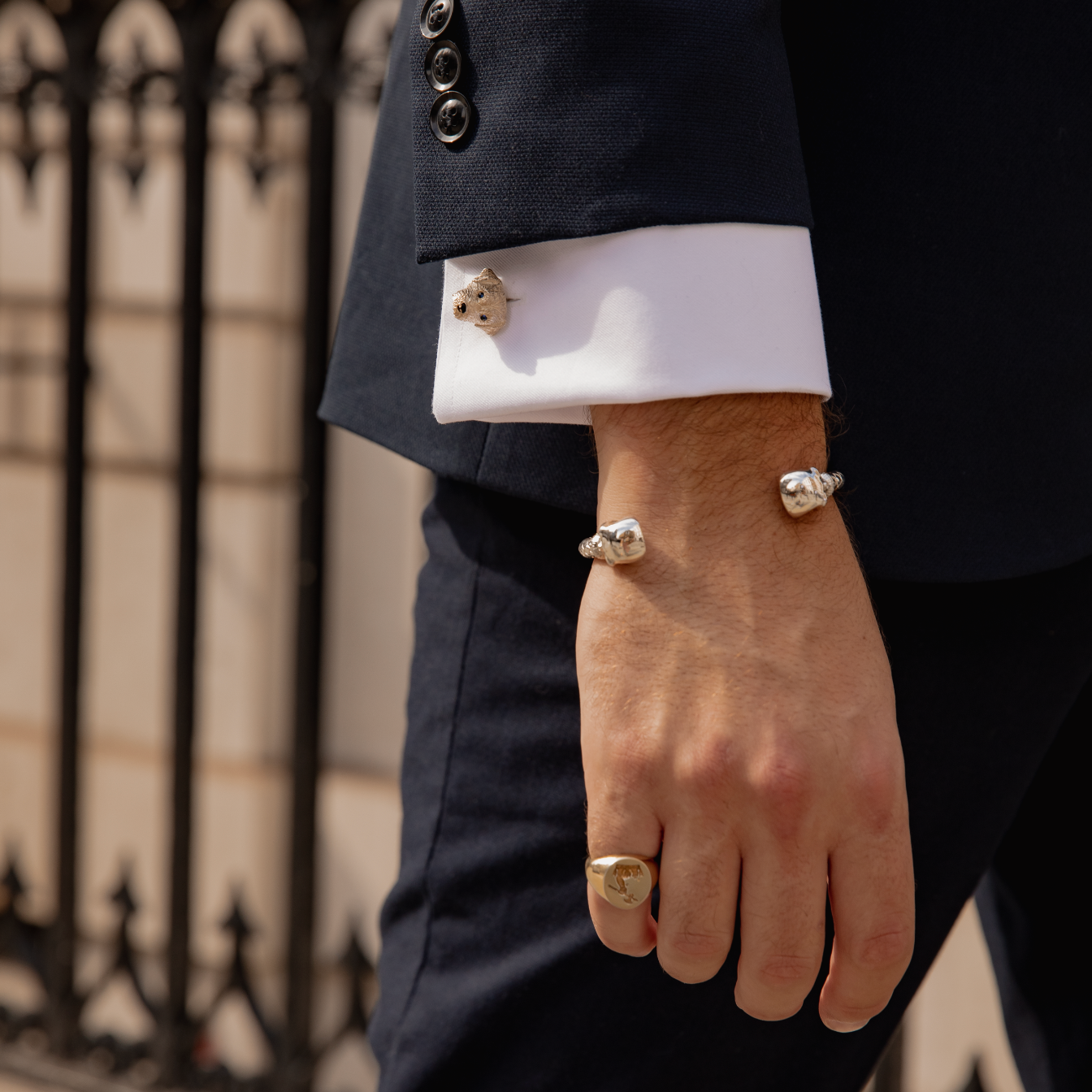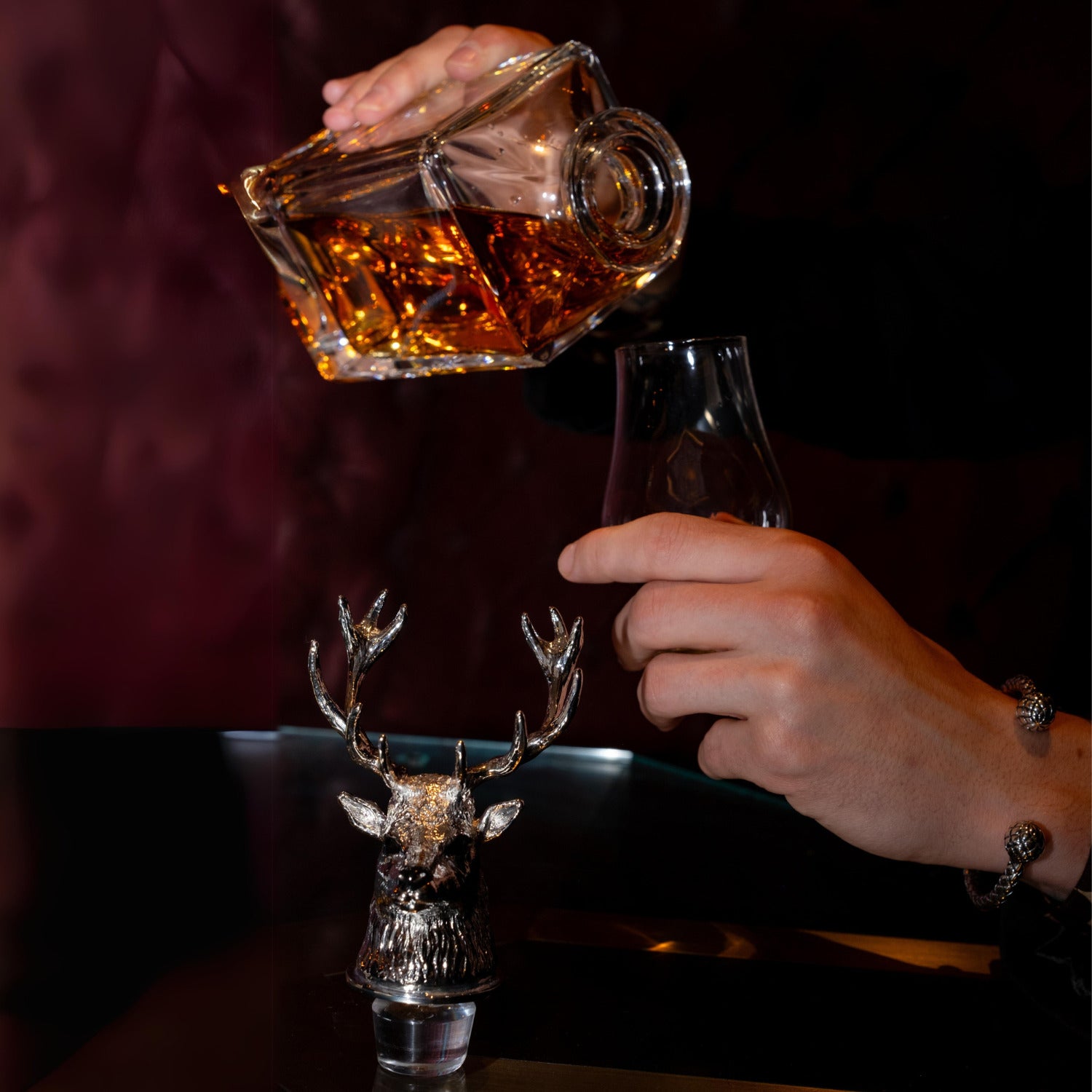Deakin & Francis have been manufacturing the world’s finest jewellery since 1786 and have been a part of the history of cufflinks.

Who Invented The Cufflink?
Around the 13th century, shirt cuffs were held together by ribbons, ties and strings. As men’s shirts and fashions changed, so did their cuffs and in the 17th century early forms of the cufflinks we know today emerged.
The stitched buttonhole was developed and tailors fastened these cuffs with two ornamental buttons attached by a chain. Named by French tailors as boutons de manchettes, or ‘sleeve buttons’ became popular with the upper classes. Jewellers began to create these sleeve buttons in silver and gold, adding semi-precious gemstones or stamped designs and thus the cufflink was born.
Cufflinks were properly introduced in the 17th century and King Charles II recognised for his style, King Charles II popularised cufflinks by regularly wearing them in public, helping to influence the people’s opinion on these statement accessories.
The 18th century saw an increase in the usage of cufflinks. Worn by royalty and aristocracy which helped to increase the popularity of cufflinks. They were also used to commemorate royal occasions and special events, much like they do today. Gentlemen of this time would be gifted cufflinks, creating collections of cufflinks.

However, it wasn’t until George Krementz, a German immigrant, and the industrial revolution, that the cufflink market was completely revolutionised. Inspired by the manufacturing process for bullets, in 1876, Krementz utilised this method to begin creating cufflinks in mass. Like most jewellery of the Victorian period, designs became more exuberant and ostentatious. Gold and silver cufflinks were at their peak and were covered with extravagant and intricate designs, often finished with glorious gemstones. The middle classes started to wear cufflinks and one design that shone in this time included writhing and intertwined snakes, which are now referred to as ‘Victorian Serpents’.
In the early 1900s more cufflinks were being worn than ever, with stunning and colourful enamelled cufflinks being popular – this is still true today. After the First and Second World Wars and the shortages that ensued, men liked to embellish their outfits with a wide range of accessories and cufflinks. By the end of the 20th century men’s shirt makers had begun mass producing shirts which included buttons already on the cuff, decreasing the use of cufflinks. As the fashions started to change and be influenced by the French, their double cuff (which we call the French cuff) made its way to England and sparked a resurgence in cufflinks. In 1924 the Boyer fastener system was invented and thus the modern cufflink as we know it was born. A new and modern cufflink that was created with the intent of making cufflinks easier to wear and secure onto cuffs, this remains one of the most popular methods of fastening cufflinks in the world today.

What do cufflinks symbolise?
Since their creation, cufflinks have been seen as a symbol of status for gentlemen with luxury gold and gemstone cufflinks seen as a symbol of wealth, power and reputation.
Some traditions from the history of cufflinks still remain today. Cufflinks are often given as gifts, especially for the groomsman at a wedding or to celebrate a graduation ceremony. Although styles and materials may have changed, the cufflink has been a staple part of high society and fashion as a symbol of status.
Today, styles range from classic and collectable to fun and funky. Cufflinks enable the wearer to make a suit or shirt his own. Custom cufflinks are made for all occasions, interests, personalities and styles. At Deakin & Francis we have made some creative twists to the timeless classics and quirky cufflinks are statements that enable the cuffs to do the talking. Ladies are trading chunky bracelets for elegant cufflinks, that are set with precious stones. Customers are seeking personalised cufflinks by adding their initials, special dates or company logos. Cufflinks are the perfect way to express a mood or feeling – the perfect finishing touch to an outfit.
If you are wanting to create your own piece of history in the form of a bespoke item, please contact us to see how we can help you. Make sure you are following our Instagram @deakin_francis to keep up to date with all our latest and greatest!
